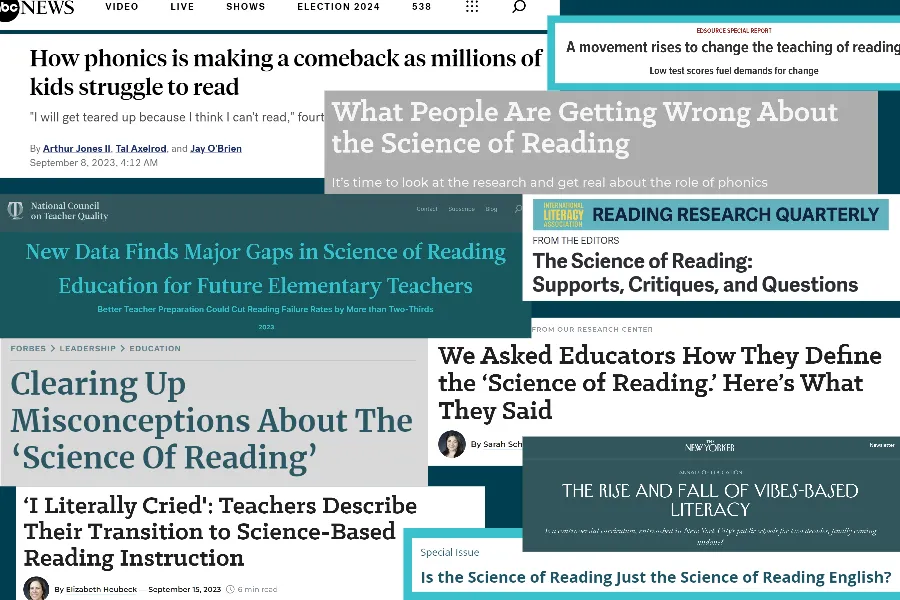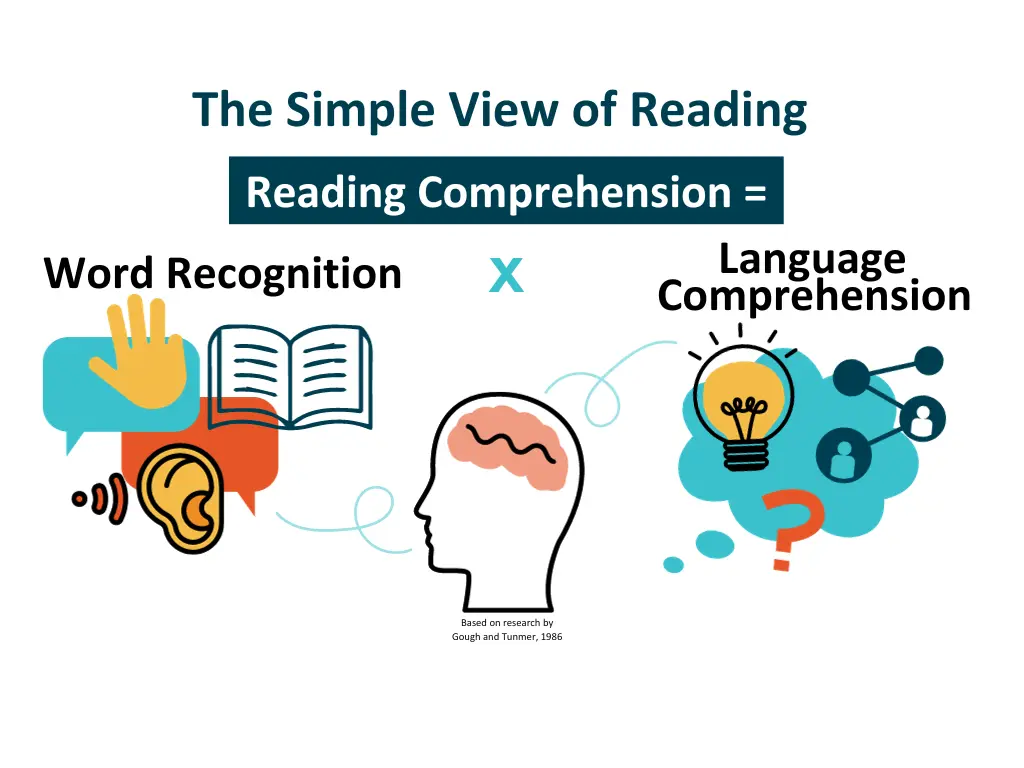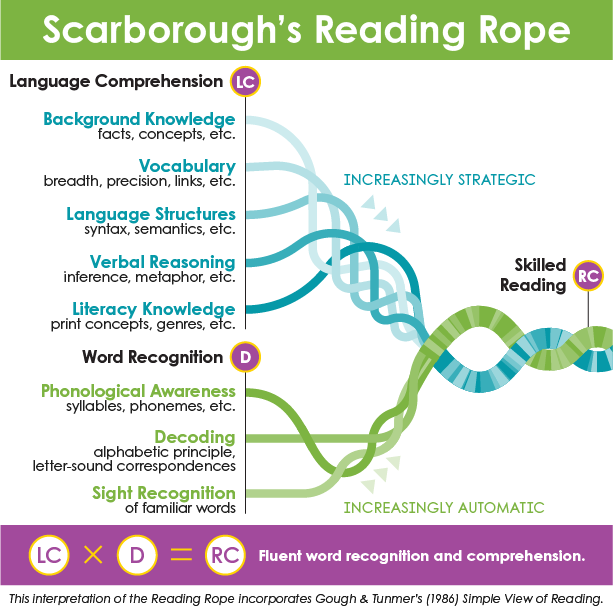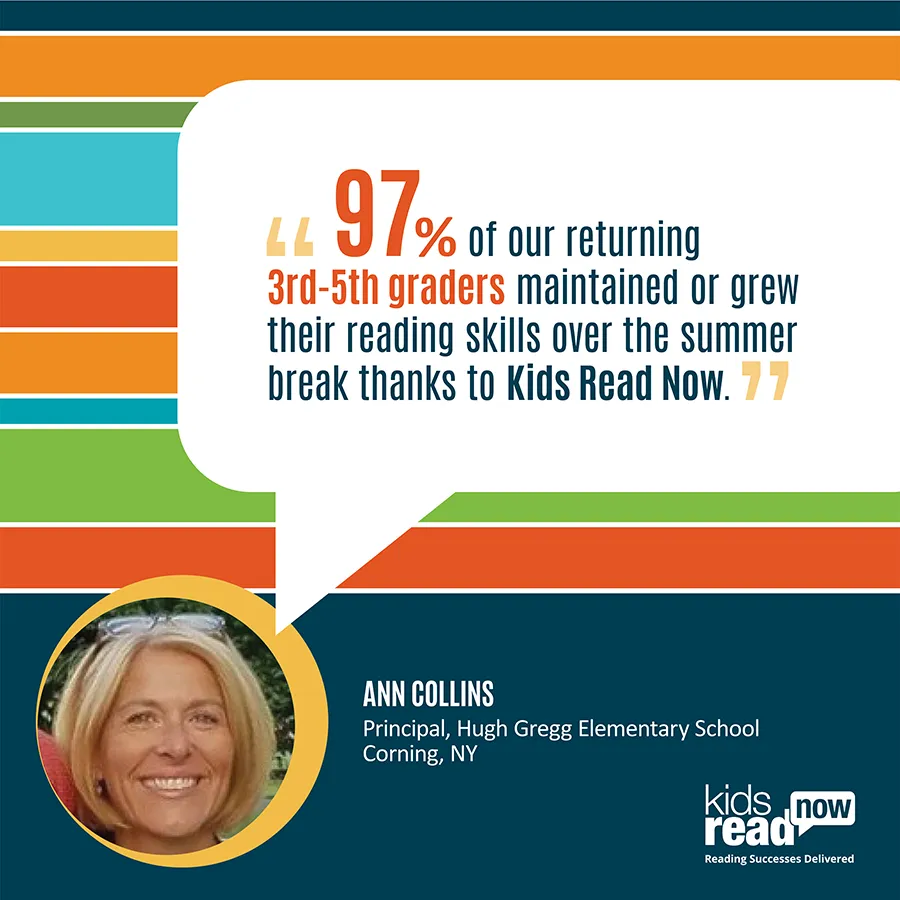Educators must get on the same page about the Science of Reading in elementary education.
So much is being thought, said, and written about the Science of Reading in elementary education, but what is it? Phonics? Curriculum? Villain? Savior? That depends on who you ask. Surprisingly, you’ll get a variety of answers from teachers, parents, or community members. In fact, definitions abound in educational articles and literature.

This illuminates a great schism in today’s educational climate: the confusion around what the Science of Reading actually is. Considering the amount of misinformation and partial information available, is it really a surprise that educators have varying degrees of understanding?
Now, to get to the bottom of what the Science of Reading is, let’s define what it’s not.
What the Science of Reading is NOT
The Science of Reading is not a phonics program.
The Science of Reading is often misrepresented as a phonics program. However, phonics is only one element of the larger body of knowledge.
The Science of Reading is not a curriculum.
Rather, the body of knowledge known as the Science of Reading informs the most effective way to teach reading, word recognition (i.e., decoding) and language comprehension (i.e., meaning and context).
The Science of Reading is not a set of curricular materials.
Anyone who says their school or district has adopted the Science of Reading is mistaken. Unlike commercially available products, it can’t be adopted, audited, piloted, or bought. It can’t be boiled down into a basal reader or teacher manual. The Science of Reading is not prescriptive, nor can the Science of Reading can’t choose sides in the “Reading Wars.” In reality, it’s a fact that some instructional practices better match the cognitive evidence about how the human brain learns to read.
The Science of Reading is not language comprehension.
While language comprehension is critical for literacy acquisition, it’s merely one part of what students need to learn to read. Dr. Wendy Strickler emphasizes the signifcance of language comprehension in an article she guest-authored for Kids Read Now’s Latest in Literacy blog. Read it to gain resources to give to parents to help them better support fluency and comprehension at home.
The Science of Reading is not word recognition.
Like language comprehension, word recognition represents only part of what students need to learn to read. Dr. Hollis Scarborough, an American psychologist and literacy expert, pared down the components of literacy acquisition into a multiplication equation she dubs the Simple View of Reading:

Unraveling The Complexity of Reading Science
Truly grasping the Science of Reading is not actually simple. While the Simple View of Reading is excellent to grasp the overarching subject, and to share with non-educators, it is not enough for educators. Understanding the Science of Reading in the context of elementary education requires acknowledging its complexity. Dr. Scarborough’s Reading Rope infographic is particularly enlightening in this respect, illustrating the interconnected skills involved in reading development.

image source: https://www.reallygreatreading.com/content/scarboroughs-reading-rope
Bridging Communication Gaps in Reading Education
The Science of Reading, particularly when it comes to its implementation in elementary education, can be misunderstood by various stakeholders. Unfortunately, parents and caregivers lack the jargon. New teachers lack pedagogical knowledge. Veteran teachers lack the training. Some stakeholders have political agendas.
So, how do we begin the conversation if everyone’s on a different page?
Easily explain the Science of Reading to your families and constituencies
We’ve made it easy to talk to non-educators about this hot topic with the help of Dr. Wendy Strickler, Assistant Professor of Reading Science at Mount St. Joseph University in Ohio. Dr. Strickler summarizes the Science of Reading as “a body of research collected across the world over decades that helps us to understand how reading develops.”
Read more about discussing reading instruction with families in her Kids Read Now blog For the LOVE of reading: A 4-part series with ideas to help build strong literacy skills.
To communicate about the best way to teach students to read, we need to be on the same page. Literally. To this end, Kids Read Now supports schools using the Science of Reading to inform instruction.
➡ Join our Latest in Literacy newsletter to get more resources about the Science of Reading.
➡ To find out more about our program, visit https://kidsreadnow.org/
Ready to make this same statement?
Kids Read Now has a truly unique program that gets kids reading outside of school time. Acclaimed by schools, teachers, parents and the Library of Congress’s Literacy Awards for our implementation of highly successful practices in literacy promotion, including Innovation, Sustainability, Replicability, Measurable Results, and Evidence-Based Practices — Kids Read Now is something you’ve never experienced before. Ask us about it!
Schools that use the Kids Read Now in-home, independent reading program know why it is so successful at reducing reading gaps, particularly the summer reading slide.
Frequently Asked Questions
Word recognition includes phonics and decoding. Essentially, word recognition is accurately matching sounds to print with increasing automaticity. To comprehend a text, students need to be able to make meaning of individual words by applying their phonological awareness and knowledge of phonics patterns.
Language comprehension, or the “upper strands” of Scarborough’s Reading Rope, consists of comprehension skills that become increasingly complex and strategic as students move through school.
Education professionals have disagreed since the 1980s about the best way to teach children to read. The term “reading wars” refers to the ongoing conflict between proponents of structured literacy and whole-language approaches to literacy instruction.
Kids Read Now was recognized with the Library of Congress Literacy Award, acknowledging its successful practices in literacy promotion. This includes innovation, sustainability, replicability, measurable results, and evidence-based practices.
Schools and educators interested in Kids Read Now’s programs can contact the organization for a personalized demonstration or discussion on how they can integrate the in-home, independent reading program into their educational environment. Kids Read Now tailored this program to allow schools to satisfy their students’ and communities’ specific needs and goals.


